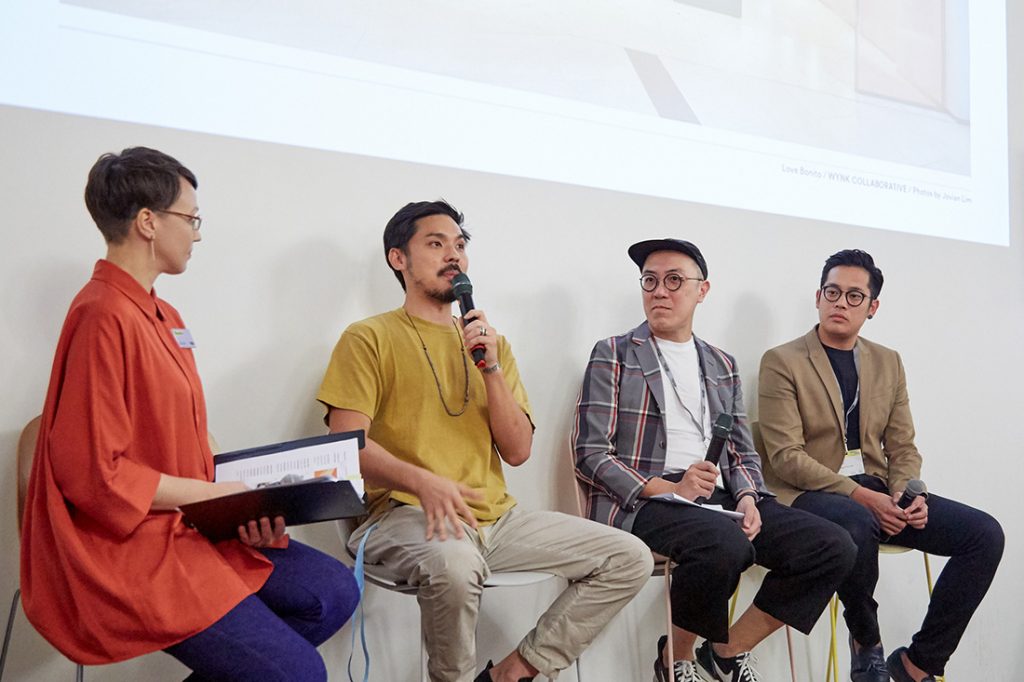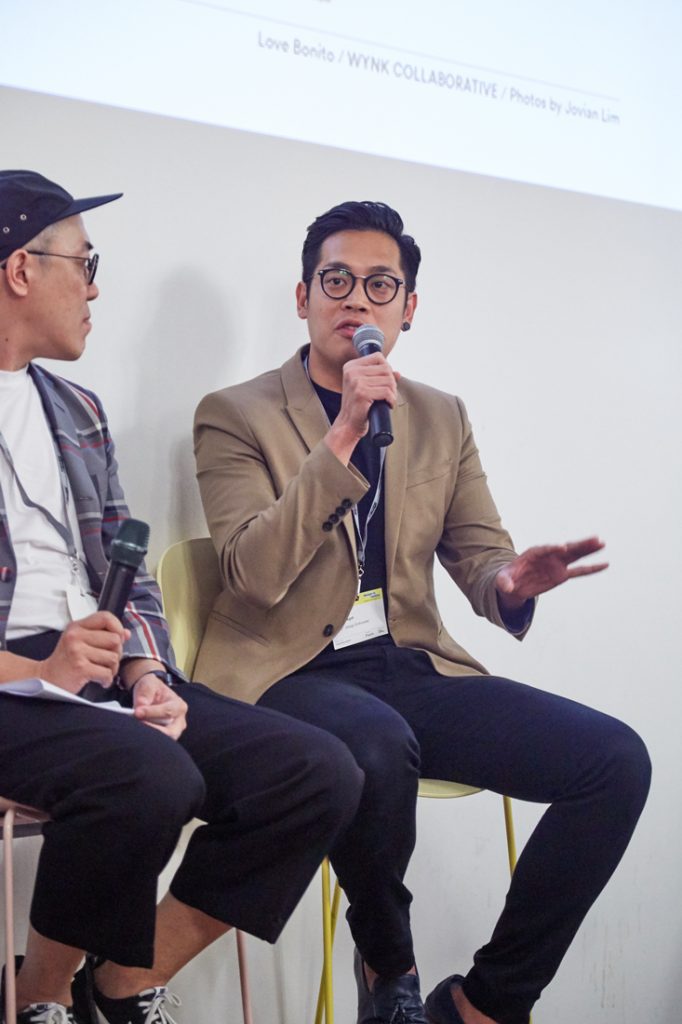The number of brand touchpoints is expanding, say three leading retail designers and strategists, and brands are starting to take on human qualities.

October 18th, 2019
Online retail has affected physical stores. But how are online retail experiences influencing customer-brand interaction in the spatial realm? What are the new power dynamics in the retail experience and how are retail designers shaping the new frontier with customers?

Narelle Yabuka (Moderator), Ken Yuktasevi, Leong Hon Kit, Billy Ip
At Saturday In Design’s Design Conversations last weekend, Narelle Yabuka, Editor of Cubes magazine, Indesignlive.sg and Indesignlive.hk, and the Asia Co-Editor of Habitus, put these questions to a panel of spatial designers. As the line between digital landscape and physical brick and mortar stores blurs, the panel considered where today’s brand experiences begin and end.

“The walls are kind of coming down about where that relationship starts,” said Ken Yuktasevi, Founder of Parable Studio. “It used to be that when I first encountered a brand was when I first walked into a shop, or when I saw someone wearing it. The whole idea of the omnichannel experience is that that relationship starts and ends at any point right there. So that means that you have to pay so much more attention than just the space, than just the graphic or the functionality of something. Now you have to think about the entire story … about how a brand wants to engage an audience because it can happen at any time.”
“And it can stop at any time as well.” Yuktasevi added. “The minute someone doesn’t resonate with what you say as a brand, they could just leave straight away. I think clients are becoming more aware of that and the demand for making sure that every touchpoint makes sense and every touchpoint points towards that actual brand story.”

Billy Ip, Principal and Regional Sector Leader at Woods Bagot‘s Hong Kong studio, offered similar observations about how brand experience is no longer limited to the confines of a physical store but encompasses other intangible qualities. For the designer, the work is, he said, “about designing a journey, not designing a shop”, and that the experience of that journey becomes an extension of the brand.

According to Leong Hon Kit, Founding Partner at Wynk Collaborative, brand experience doesn’t really end today. “You’re constantly engaged by brands through different media channels, Twitter, Facebook, Instagram, your friends, and brands are also starting to take on the qualities of being a person,” said Leong. “It’s no longer a company that influences you to buy things or to consume a service; they are your friend—they’re trying to be your friend and to build this very, very long term relationship and to kind of grow with you and change with you along your life.”
Leong said retail designers now take on what he called a “multi-role”, as their work now encompasses more than the creation of a space for sale transactions. He said, “Designers have to be a bit of a designer, a bit of a marketer, a bit of a strategist, and be super aware of ‘customer journey’, operations, and understand the client and the brand from the more high-level perspective to design a store that fits within this broader omnichannel environment.”

Yuktasevi pointed out that millennials are no longer seen as target consumers, but a new generation of clients. “This new generation of client wants to interact with the designer in a totally different way. They’re not interested in a vendor relationship anymore. They’re not just looking for a designer, they’re actually looking for an ally.”

A searchable and comprehensive guide for specifying leading products and their suppliers
Keep up to date with the latest and greatest from our industry BFF's!

Sub-Zero and Wolf’s prestigious Kitchen Design Contest (KDC) has celebrated the very best in kitchen innovation and aesthetics for three decades now. Recognising premier kitchen design professionals from around the globe, the KDC facilitates innovation, style and functionality that pushes boundaries.

Suitable for applications ranging from schools and retail outlets to computer rooms and X-ray suites, Palettone comes in two varieties and a choice of more than fifty colours.

Create a configuration to suit your needs with this curved collection.

Marylou Cafaro’s first trendjournal sparked a powerful, decades-long movement in joinery designs and finishes which eventually saw Australian design develop its independence and characteristic style. Now, polytec offers all-new insights into the future of Australian design.

2024’s theme, “Reawaken,” calls for a journey through reinvention and sustainability.

Leading the charge for sustainable design, X+O and Nudie Jeans are both making a statement in Brisbane and doing it with creativity and innovation.
The internet never sleeps! Here's the stuff you might have missed

Savage Design’s approach to understanding the relationship between design concepts and user experience, particularly with metalwork, transcends traditional boundaries, blending timeless craftsmanship with digital innovation to create enduring elegance in objects, furnishings, and door furniture.

A third in the series of boutique hotels under the Lloyd’s Inn brand, Lloyd’s Inn Kuala Lumpur bring the immediacy of nature to the new high-rise hospitality experience in the heart of a bustling city. “Lloyd’s Inn Kuala Lumpur is unique from the other properties in that it is a high-rise development, with more than […]